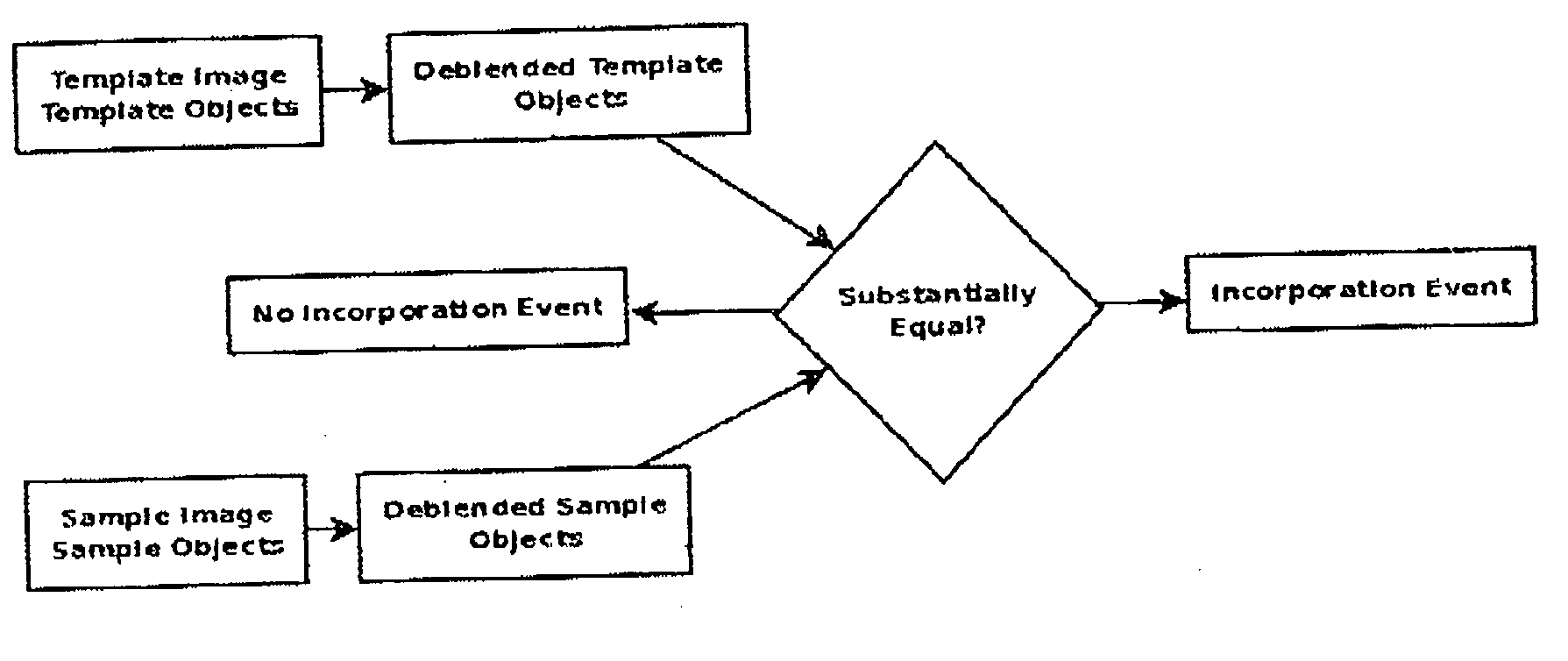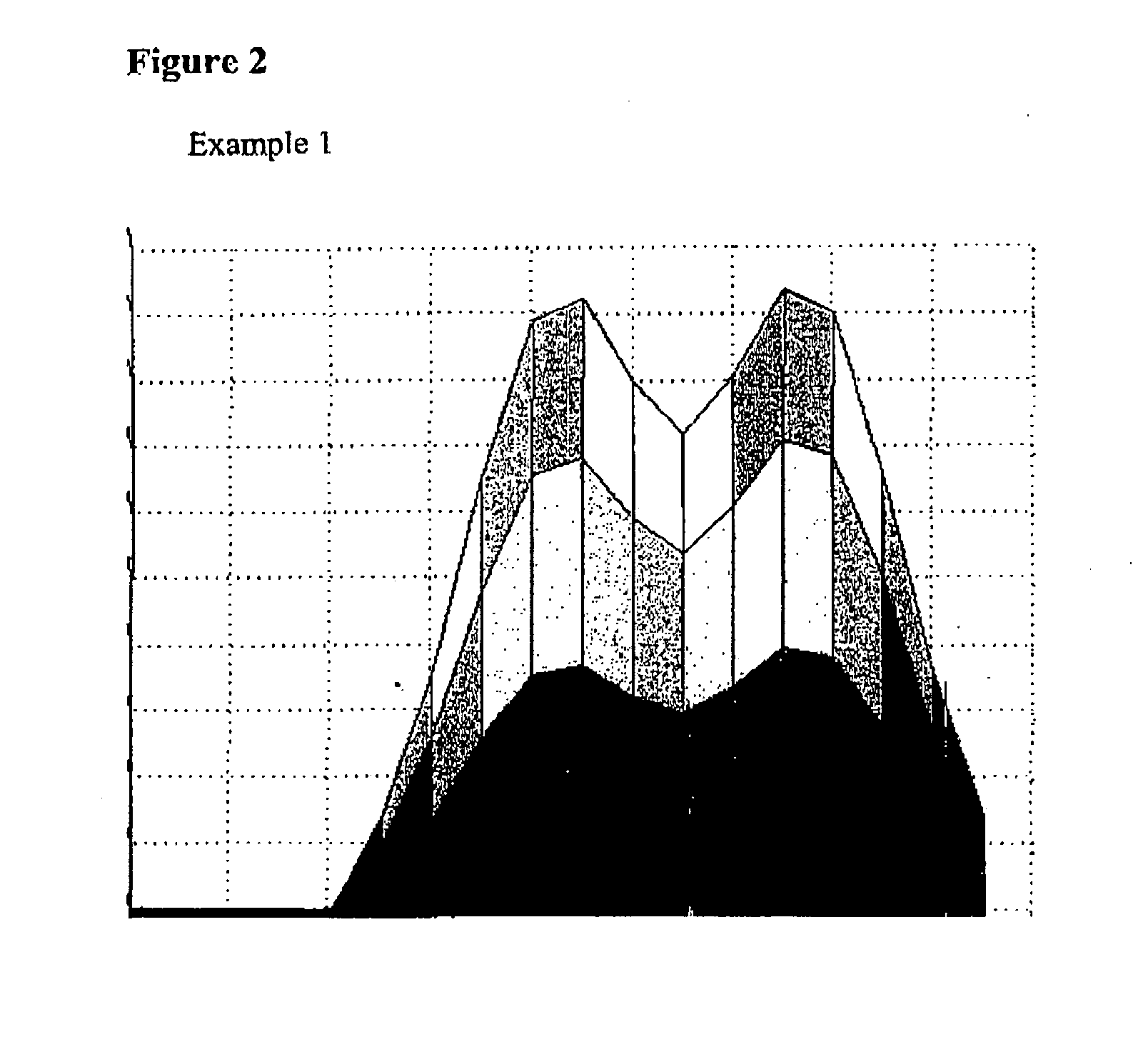Point source detection
a detection method and point source technology, applied in the field of point source detection, to achieve the effect of reducing or eliminating artifacts
- Summary
- Abstract
- Description
- Claims
- Application Information
AI Technical Summary
Benefits of technology
Problems solved by technology
Method used
Image
Examples
Embodiment Construction
[0027]In the method of the current invention, a point spread function is used to characterize the intensity of the point source. In a digital image of point sources, a point spread function of a source located in (x1,y1) is described by Gaussian:
F(x,y)=Fπσ2-(x-x1)2-(y-y1)22σ2Eq.1
where F is the intensity of the source and σ is a size-parameter defined by optics that produced the digital image. For the purposes of this application, we define the optical resolution of the system, ρ, as a minimal distance between the two point sources that allow for the optical resolution of the two sources. The point sources are considered optically resolved if a point spread function has a minimum point between them. The resolved and unresolved sources are exemplified in FIG. 1. Let's consider Example 1 and Example 2, represented in FIG. 2. For Example 1, two point sources are located at a distance d, d>ρ, where ρ is an optical resolution. For Example 2, two point sources are located at a distance d, ...
PUM
 Login to View More
Login to View More Abstract
Description
Claims
Application Information
 Login to View More
Login to View More - R&D
- Intellectual Property
- Life Sciences
- Materials
- Tech Scout
- Unparalleled Data Quality
- Higher Quality Content
- 60% Fewer Hallucinations
Browse by: Latest US Patents, China's latest patents, Technical Efficacy Thesaurus, Application Domain, Technology Topic, Popular Technical Reports.
© 2025 PatSnap. All rights reserved.Legal|Privacy policy|Modern Slavery Act Transparency Statement|Sitemap|About US| Contact US: help@patsnap.com



